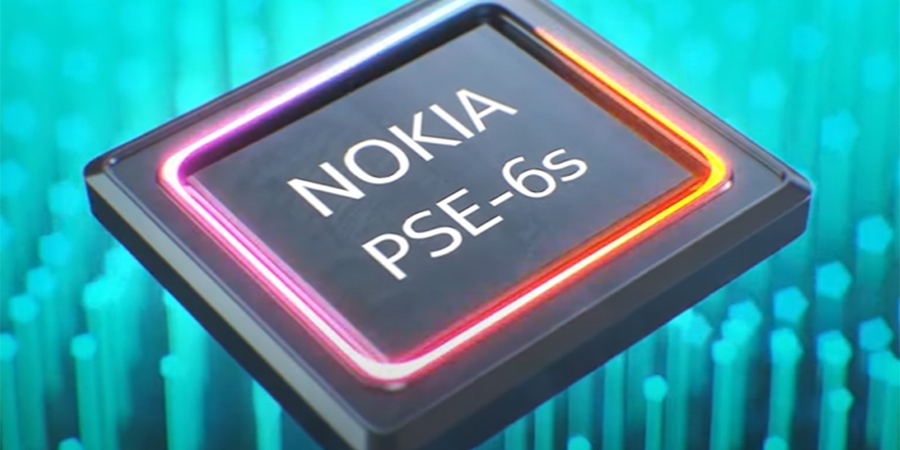Nokia announced the launch of its sixth-generation super-coherent photonic service engine, the PSE-6s, which is capable of reducing network power consumption by 60%. In addition to improving energy efficiency, network operators need to add massive capacity in response to ever-increasing demand.
As the powerhouse behind the evolution of Nokia’s optical transport portfolio, the PSE-6s supports the efficient delivery of high-speed services, including 800 Gigabit Ethernet (GE), over distances of 2,000 km and beyond.
Nokia PSE-6s optical engines support a unique chip-to-chip interface that enables them to be deployed in pairs to power the industry’s first 2.4 Tb/s coherent transport solution. This allows network operators to efficiently transport any combination of high-speed client services, including 400 and 800 GE. With a three-fold increase in performance, PSE-6s-enabled platforms support the transport of 800 GE services in metro and datacenter interconnect (DCI) applications, with a reach of 2,000 km and beyond, across long-haul networks and trans-oceanic cables.
James Watt, vice president of Nokia Optical Networks, said: “Additional capacity often means additional complexity for operators. But PSE-6s is designed to make scale simple. PSE-6s is available as an upgrade across our portfolio. Powerful enough to redefine the frontier of coherent transport, it’s nevertheless simple to deploy, so network operators can take immediate advantage of its scale and performance capabilities. What’s more, these benefits come with lower power consumption per bit, resulting in a better TCO, as well as helping operators meet increasingly aggressive carbon reduction targets.”
PSE-6s tightly integrates the latest generation of 5nm coherent digital signal processors (DSPs) with Nokia’s CSTAR silicon photonics. Operating at 130 Gbaud, the PSE-6s powers the next generation of coherent transport at up to 1.2 Tb/s of capacity per wavelength. PSE-6s offers a simple upgrade path for network operators, allowing them to upgrade their networks to PSE-6s across the 1830 family of optical networking platforms, including the 1830 PSS, 1830 PSI-M and 1830 PSS-x, leveraging existing ITU-T WDM channel plans.
Gilles Bourdon, vice president, wireline networks at Orange Group, said: “The 6th generation of coherent optical engines supporting 130 Gbaud operation and up to 1.2 Tb/s per wavelength gives us confidence to increase the capacity of Orange backbone networks in the future, running at 800 Gb/s per wavelength in long distance links and providing a very efficient and reliable transport solution to interconnect our routers with 800 GE ports.”
Marwan Bin Shakar, senior vice president, access network development, etisalat by e& UAE, said: “We are big believers in technological solutions that digitally empower societies while realizing our sustainability ambitions and supporting other companies to do the same. We are continuously working closely with our partners and stakeholders to create solutions that turn ideas into action. With its reduced power consumption per bit, PSE-6s will be instrumental to achieving our sustainability goals, supporting the UAE’s Net-Zero by 2050 ambitions.”
PSE-6s will be presented for the first time at MWC 2023 in Barcelona. Optical networking equipment containing the new PSE-6s is expected to be available for customer network trials in the second half of 2023.










